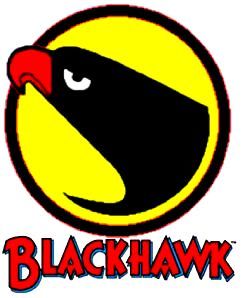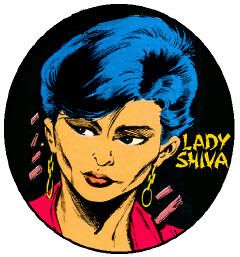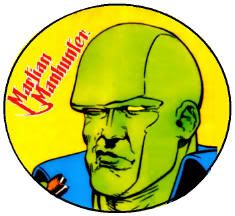
A few months back, I was inspired by the appearance of Peter Cannon in DCU: Legacies #5 to look at what characters DC has assumed ownership of over the years, as well as to consider the tendency for the company to treat their acquisitions as red-headed stepchildren (which recalls their dalliances with Archie's super-heroes, actually.)
Until the 1970s, DC Comics was technically known as National Periodical Publications, derived from the Malcolm Wheeler-Nicholson's offering New Fun Comics under the banner of National Allied Publications. Harry Donenfeld and Jack Liebowitz, the guys who would really end up running National, came into the picture with Detective Comics. Wheeler-Nicholson was forced out after a bankruptcy, and the core DC super-hero universe began with Superman, Batman and Robin, plus lesser lights like Dr. Occult, Crimson Avenger, the Sandman, the Spectre, Hourman, and Dr. Fate.
Meanwhile, Donenfeld set up a side company with Charlie Gaines called All-American Publications in 1939. This was the birthing place of Wonder Woman, the Flash, Green Lantern, Hawkman and most of the rest of the Justice Society of America (including the team itself.) This represents the first schism in the DC Universe, because history bears out that their "World's Finest" was long the trio of Superman, Batman and Robin, leaving Wonder Woman and company as the other guys. In fact, for a brief period in 1945, All-American had its own separate "AA" cover logo, but when Gaines sold his stake later in the year, the line was folded into National. Think about this: While latecomer National back-up players like Aquaman and Green Arrow managed to stay in print throughout the Silver Age, the headlining stars of the All-American line were out of print by 1951. The one exception was Wonder Woman, but it didn't help that her co-creator William Moulton Marston and his estate retained certain rights to that character long after his death.
National bought the Quality Comics stable in 1956, and couldn't even be bothered to maintain their copyrights afterward, allowing scores of characters to enter the public domain. Plastic Man was one of the few super-heroes to survive the Golden Age, but National blew off continuing his title and buried him so deep in their portfolio that one of their own editors created a rip-off in 1960 without knowing he could have resurrected the original. National finally brought Plastic Man back for the first of many underwhelming revivals in 1966, not a single one lasting even two years. The other super-heroes pop up now and again, usually under the Freedom Fighters banner. National did continue publishing some of Quality's war titles, the most prominent star being Blackhawk, whom they spent most of the '60s updating and revising to the point of farce, until finally killing the book before decade's end.
After incessant lawsuits levied by National kept the best-selling Marvel Family of titles from being fully exploited through merchandising and media, plus the downturn in the super-hero industry after World War II, Fawcett Comics finally settled and closed down its comic line in 1953. Twenty years later, National began licensing their characters as add-ons to the DC Universe. In the interim, National had hired Captain Marvel's creators to largely recast Superman in the image of Shazam, building his own family and borrowing the lighter tone. By 1973, not only was Captain Marvel out of step with the times, but much of what had made his family unique was now associated with the Man of Steel. Plus, honestly, National couldn't have ever worked out a deal to buy the Captain Marvel trademark from Marvel Comics if it really mattered to them? I think not. DC didn't even acquire all the rights to the Fawcett properties until 1991, about the time they launched the most successful revival of Captain Marvel to date, four years worth of the mediocre The Power of Shazam!
In 1983, DC bought a batch of Charlton Comics "Action Heroes" at fire sale prices. Probably because a former Charlton editor was in senior management at DC, the short-lived and unsuccessful characters were treated with more respect than most once at DC. It probably didn't hurt that Charlton was never a serious competitor of DC's, and that the company had a much greater leeway to reinterpret the characters for modern times. Captain Atom had a healthier run in his solo series than Captain Marvel at DC, and the Question showed more staying power than Plastic Man. It's important to not that DC did not buy the Charlton name nor all of its assets. Aside from the aforementioned heroes, DC also has Blue Beetle, Nightshade, Peacemaker, Judomaster, Sarge Steel and their associated supporting casts/villains. DC only held the rights to Peter Cannon, Thunderbolt until 1993. Thunderbolt's creator, Pete Morisi, had asserted that he owned the character, not Charlton, and an agreement saw the rights revert back to him after a last failed attempt at a solo series. Morisi passed away in 2003, and one would expect DC to trumpet the reacquisition of the character from his estate, had they done so. Therefore, it's safe to assume Peter Cannon's appearance in a 2010 title was either an oversight or a single usage deal.
In 1991, DC Comics licensed the MLJ/Red Circle super-heroes once published by Archie Comics. The !mpact line that followed was a commercial dud that folded within two years. In 2008, a second, smaller scale licensing revival was attempted under the Red Circle banner, this time incorporating the Archie super-heroes into the DC Universe. This also folded within two years, and DC does not own the rights to any of the Archie heroes.
Milestone Media was created in 1993 as a partnership with DC Comics. However, DC does not own any of the Milestone characters. Instead, they have what amounts to an exclusive licensing agreement to publish Milestone characters, while Milestone Media retains all copyrights and creative control.
WildStorm Productions launched in 1992, and sold out to DC in 1999. The line featured cutting edge writers and artists who were then pillaged by other companies or alienated by the heavy-handed management at DC. Their core books were rebooted as a severely mishandled new universe in 2006, and finally folded entirely in 2010.
In 2009, DC announced that they had bought the rights to the T.H.U.N.D.E.R. Agents from John Carbonaro before he passed away that same year. However, the rights to those characters were disputed in court throughout the 1980s. There was a longstanding argument that the failure of publisher Tower Comics to secure copyright on their characters in their first issue meant they were in the public domain. Carbonaro was a tenacious plaintiff though, and fought for years to shore up his exclusive ownership of the properties. Funnily enough, Archie Comics licensed the characters during one of their super-hero line revivals, and Carbonaro danced with a great many publishers before establishing a (sometimes rocky) relationship with DC in recent years.
Hopefully, this piece helps to clear up lingering questions of who owns what. I think it also makes a case for how the company tends to segregate its acquisitions and show greatly preferential treatment to its in-house creations.

















4 comments:
Alan Moore originally wanted to use the newly acquired Charlton characters for Watchmen, but Dick Giordano wouldn't let him. Rorschach was supposed to be The Question, Nite Owl was Blue Beetle, Dr. Manhattan was Captain Atom, etc.
I considered mentioning the Watchmen, but then I'd have to wade into the whole "they're your characters just as soon as we're done with them" clause, and then I'd have to try to figure out Neil Gaiman's stake in the Sandman characters, and then...
Just a great and informative post!
There's more to the story of DC and Quality. It's in my book, which I'll be probably blogging and flogging more when the printed edition hits stands. I've got a couple unique insights on the matter...
Post a Comment